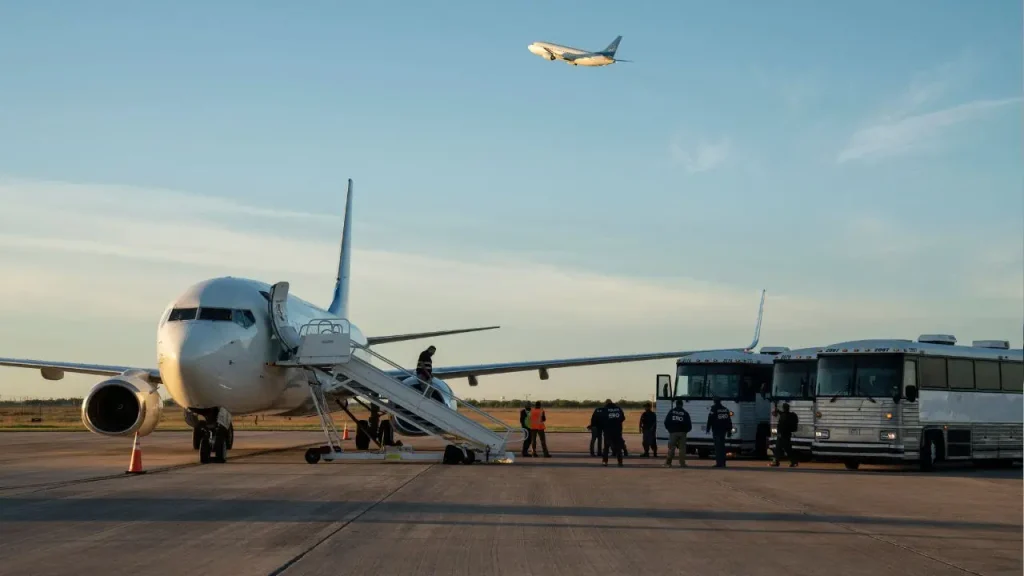Trump Administration Offers Voluntary Departure Incentives to Migrant Teens
The Trump administration has introduced a new initiative aimed at addressing the influx of unaccompanied migrant children in the United States by offering financial incentives for voluntary departure. According to reports based on a letter from the Department of Health and Human Services’ Office of Refugee Resettlement, the administration is now offering a one-time $2,500 resettlement stipend to unaccompanied children aged 14 and older who voluntarily choose to leave the country. This program represents a significant shift in immigration enforcement strategy, focusing on incentivizing self-deportation rather than solely relying on forced removals. Immigration and Customs Enforcement (ICE) has clarified that any financial support would be provided only after an immigration judge approves the request and the individual arrives in their country of origin, with initial offerings being made to 17-year-olds. The program excludes minors from Mexico but will cover children who had already volunteered to leave as of the announcement date.
Administration officials have framed this initiative as a humanitarian response to what they describe as cartel trafficking of children during the previous administration. Emily Covington from ICE’s Office of Public Affairs emphasized that many unaccompanied children “had no choice when they were dangerously smuggled into this country,” positioning the program as a way to reunite these minors with their families in their home countries. This perspective presents the voluntary departure option as potentially beneficial for children who might wish to return to their families but lack the means to do so. However, the program has drawn criticism from immigration advocates who express concern about the broader implications of such incentives and whether they might compromise due process protections for vulnerable minors. Some advocates have warned about what they reportedly termed “Freaky Friday,” suggesting a more extensive removal campaign, though ICE has firmly denied this characterization, calling it “categorically false” and designed to “instill fear.”
The voluntary departure program for minors appears to be part of a larger self-deportation strategy implemented by the Trump administration in fulfillment of campaign promises to conduct the “largest domestic deportation operation in American history.” According to Department of Homeland Security figures, approximately two million illegal immigrants have either been removed or have self-deported since January 20, with the vast majority—1.6 million—reportedly leaving voluntarily. These numbers represent what the administration describes as a “new milestone” in immigration enforcement, achieved in less than 250 days. In May, President Trump signed an executive order establishing the first-ever self-deportation program, which initially offered adult migrants $1,000 stipends to voluntarily leave the country on government-funded flights. The DHS has presented this approach as cost-effective, stating that voluntary departures cost approximately 70% less than the traditional enforcement process of arrest, detention, and deportation.
The financial aspect of these programs has received significant attention, with the State Department reportedly transferring $250 million to DHS specifically for voluntary deportations in June. The administration has emphasized the economic efficiency of this approach, noting that it typically costs more than $17,000 to process a forced deportation through traditional means. By offering financial incentives that are substantially less than this amount, the government aims to reduce overall enforcement costs while still achieving its immigration policy objectives. The $2,500 stipend for minors represents a larger individual payout than the adult program, perhaps reflecting the additional complexities and sensitivities involved in the repatriation of unaccompanied children. This financial dimension raises questions about both the sustainability of such programs and their potential appeal to migrants who may face uncertain economic prospects in their countries of origin.
Immigration advocates and human rights organizations have expressed serious concerns about the potential consequences of this approach for vulnerable minors. Shaina Aber, executive director of the Acacia Center for Justice, a nonprofit providing legal defense to immigrants, has criticized the program for potentially undermining due process protections and exposing children to renewed trafficking cycles. Her statement highlights a central concern: many of these children were initially trafficked into the United States, often by cartels or smugglers, and returning them to their countries of origin without adequate safeguards could place them back into dangerous situations. Aber characterized the DHS message as “confusing” and potentially contradicting “established laws and protocols that Congress passed to protect children from cyclical trafficking risks.” This critique points to the tension between immigration enforcement goals and child welfare protections that have been established through legislation specifically designed to address the unique vulnerabilities of unaccompanied minors.
The voluntary departure program for migrant teens represents a complex intersection of immigration enforcement, humanitarian concerns, and political promises. While the administration presents it as offering choices to migrants and reuniting families, critics see potential risks in incentivizing children to forego their legal rights to seek protection in the United States. The program raises fundamental questions about how to balance border security objectives with humanitarian obligations toward vulnerable children. As implementation proceeds, close scrutiny will likely focus on whether appropriate safeguards exist to ensure that children’s decisions are truly voluntary and informed, that they receive adequate legal counsel before accepting such offers, and that protocols are in place to monitor their welfare after return to their countries of origin. The ultimate impact of this policy will depend not just on the numbers of departures it generates, but on the long-term outcomes for the children who accept these incentives and return to the situations they originally fled.


